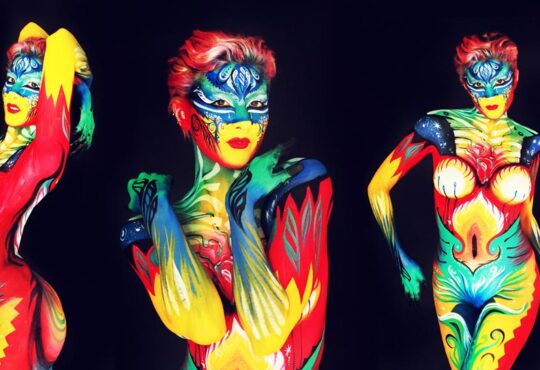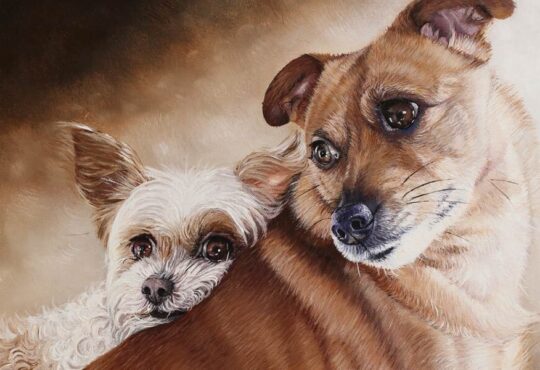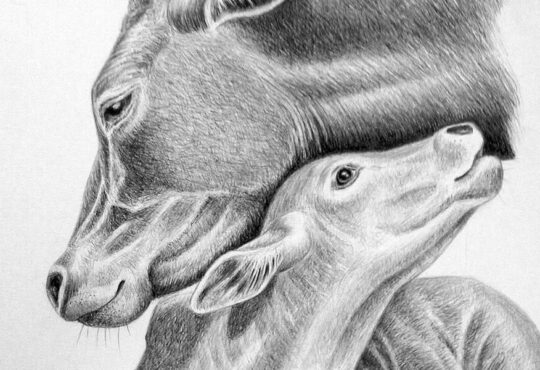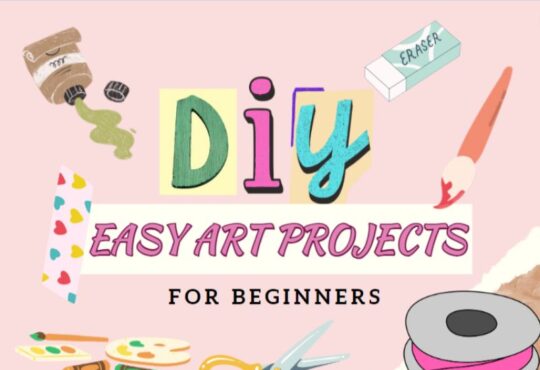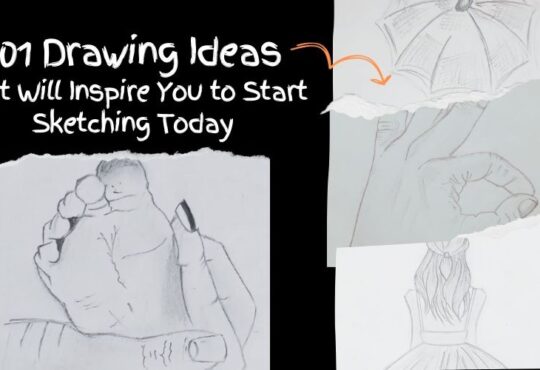Tips for Beginners to Create a Beautiful Painting – An Ultimate Guide of 5 Steps
When you think about starting to paint, many things come to your mind, making you feel puzzled. Questions like “How to begin?”, “What are the basics of painting?”, “What supplies will I need?”, “What are the mediums?” may pester you when you are a newbie to painting.
We have designed this article for absolute beginners like you. Here, we will cover all such questions, so relax! Hopefully, it will quench your curiosity to the fullest. Below are the five basic steps of creating a beautiful painting.-
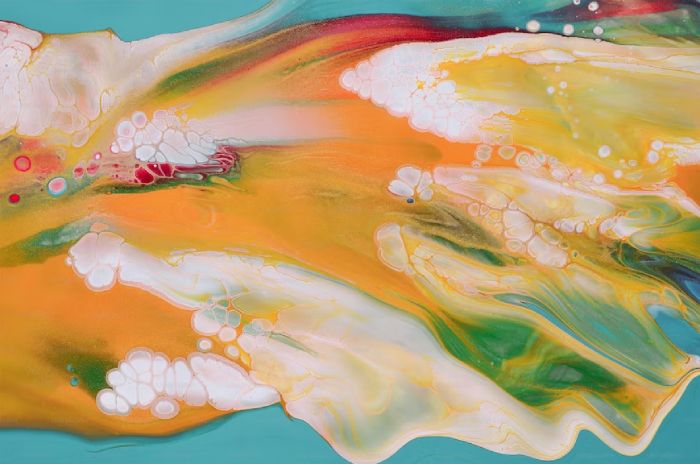
Consider Your Goal
Before committing to painting or buying your art supplies, it is important to consider some factors.
What makes you embrace painting? What is your ultimate desire? What types of painting do you want to create? How much money would you like to spend on buying art supplies? Will you need a lot of time to finish a single project?
Your answers to these questions determine how you have to proceed.
Generally, there is no static learning path for everyone that helps people master painting. Instead, everyone has a unique interest, natural skills, and tendencies that determine their optimal learning path.
For example, some people prefer oil paints, while others like painting with acrylic. You must identify which type of painting suits your style and budget.
If you just want to fulfill your hobby and have no interest in commercial painting, you can choose a more relaxed way to learn painting. Regardless of the case, it is crucial to have self-awareness to get yourself near your goal.
Get Familiar with the Basics of Painting
If you want to learn the techniques of painting efficiently and improve your skills over time, you need to get familiar with the fundamentals of art. They are the core pillars of painting, and learning these elements will benefit you in every brush stroke.
Elements of Color
Before creating any artwork, you need to understand what color is completely. You need to comprehend color in terms of saturation, hue, and value. These three elements together make up colors.
Saturation refers to how intense, vibrant, or rich one color is. Value refers to how dark or light a color is. Hue indicates the position of color in the color wheel. All different hues of color are – red, yellow, green, and blue. The color wheel makes you understand which colors work well.
You can refer to a free online color wheel tool to understand colors and shades better.
Understand the Use of Lines
The most common type of line used in painting is contour lines. The line is typically used to outline an object. Some painters use contour lines around their subjects, whereas others may use them to show shapes.
Understand Value
As mentioned earlier, value refers to how bright or light a certain color is. When you are mixing paints, colors can be deceptive unless you consider the lightness and darkness of colors.
A value ranges in the top third (dark colors), the midsection (medium grey tones), or the bottom third (dark colors). The values in most of the paintings are similar to each other unless there exists heavy contrast.
Learn How to Build Up Shape
Beginner painters like to see a single shape for one subject rather than focusing on many layered shapes. Learn how to build up multiple shapes that can be connected together instead of outlining a specific figure.
Look at Your Overall Composition
Composition refers to the placement of figures and objects as well as the layout of the painting. Placing figures in a way that attracts the viewer’s eyes helps you make an interesting composition.
As composition is the most basic element of paintings, never place a single figure in the center.
Use Your Space Effectively
When you are working on a flat surface, the illusion of distance is important. Through the strategic use of space, you can create this illusion. It helps you make further things look smaller and closer things look larger. You can also overlap shapes to create depth, this is often called shading.
Shading is not only used to create an illusion of distance but also used for to give your subject a realistic shape. For example, if you want to draw lips, you need to use shading to to create the curves of lips.
Create Movement with Paint
Movement is created if you repeat a textured pattern over and over on your entire canvas. Not all paintings require movement, but it is often a must in realistic painting, where you need to create the illusion of motion.
Understand Edge
An edge is used to separate two shapes. Edges could be either soft, hard, or lost. A hard edge creates a clean transition, a soft edge creates a smooth transition, and a lost edge is too smooth to see. The way you use edges will help you create the effect you desire.
Learn to Create Texture
The illusion of texture can make things look more touchable in your painting. You can create texture by using brush strokes or throwing paint in several ways on your canvas.
Quick, short brush strokes help to create furlike texture while flowing, long brush strokes create a longer and softer look. Some people even use spatulas to create texture for things like wooden boards.
Choose a Medium
You need to pick the medium that fits you so that you make the most of that particular medium. The major choices of color mediums in painting are acrylic color, oil color, and watercolors. Every medium comes with its pros and cons.
Think about Using Acrylic Paints
Acrylic paintings are a water-based option that beginners widely favor. It is very durable, versatile, easy to use, and it does not demand any special supplies. These paints are water-soluble, requiring only water to thin the paint and soap to clean the brushes.
Acrylics may suit you if –
- You are a beginner and don’t have much experience with the complexities of watercolor and oil painting.
- You want to complete a painting within a single day.
- You are reluctant to use harsh chemicals.
- You prefer a less expensive painting option.
- You prefer easy cleanup time.
- You are interested in creating a beautiful 3D effect.
The downsides of acrylics are –
- This paint dries quickly.
- Wet-on-wet and blending painting techniques could be difficult.
- Some light colors may have changed their colors after they dry.
Consider Using Oil Paints
Oil paints are widely used among professional artists as they are thick, slow-drying, and the most complex medium out of the three.
Oil paints may suit you if –
- You can afford to take a lot of time to complete the painting as oil painting takes about three months to dry completely.
- You want to work with different painting techniques, including glazing, blending, and scumbling.
- You want to have the richest color in painting.
The downsides are –
- It is the most expensive painting option in comparison to acrylics and watercolors.
- It requires additional supplies such as gels or mineral spirits.
- It is more toxic than acrylics.
- It requires proper ventilation when you use it.
Try Watercolor Paint
Watercolor painting is a great complement to oil or acrylic paintings because it trains you in different sets of skills.
If you are new to painting, watercolors could be a good option to start with, as it requires less investment. It also allows you to limit the reworking of errors because of the untamed nature of water.
To get started with the painting, buy some cases or tubes of pigment or a set of watercolor pans.
When you use only the colors, the painting becomes opaque and thick and cannot cover much space. On the contrary, when you use it with water, the painting will become transparent and thin out.
Watercolors may suit you if –
- You are limited on budget.
- You like to produce beautiful effects of translucent and thin layers of color.
- You want to create a stunningly elegant painting.
- The painting will not curl or wrinkle when it comes in contact with water because you are using a special type of paper that absorbs water.
The downsides are –
- It does not allow you to paint thick layers of color.
- Any pieces of old paper do not work very well, as watercolors are used only on a specific paper.
- You will get limited options to use things as a black canvas.
Get Your Supplies
If you want to start, you need art supplies. Though the supplies will vary depending on the painting option you choose, you will need the following supplies in a broad sense.
Choose Your Brush
Consider two things while choosing a brush: the shape of the bristles and its materials. Three shapes of bristles are available: round (pointed cylindrical tip), flat, and filbert (flat brush with a point). Bristles can be made with synthetic, sable, hog, synthetic mix, or squirrel hair.
- A sable or squirrel brush with a round tip is the best for watercolor painting.
- Hog and synthetic mix with a filbert tip is the best brush for oil painting.
- The best option for acrylic painting is a synthetic or synthetic mix brush with a flat tip.
Choose Your Canvas
For oil and acrylic paintings, stretched canvas is the best canvas as it is less expensive. Thick drawing paper, watercolor paper, and canvas board all go well with oil and acrylic paints. But the surface must be smooth. And, the watercolor paints can be drawn only on special paper or fabric.
Get Other Supplies
You will need jars full of water, a pallet, a rag, an apron to wear, an easel, palette knives, etc. You will also require solvent in case of oil painting.
Create Your First Painting
Now that you are ready to produce your first painting, consider the following.
- Choose a subject for your painting, like a vase of flowers, a bowl of fruits, or a stack of books.
- Draw a rough outline or create a sketch on your canvas before painting it.
- Find out the light sources and spot the darkest and brightest areas of your subject. Keeping this in mind, mix colors or create several shades of a single color.
- Start painting from the back to the front.
- Add different shapes, objects, and layers of paint to your subject.
- Add texture with a brush, a glaze, or an intricate figure to get a finishing touch.
- If you take art as a therapy or stress reliever, you will love your artwork, no matter how it turns out. It will eventually bring you success and result in a beautiful painting.
- After completing all the details, clean up your working place and materials, and you are done!
To Wrap Up
Among different painting options, you have to choose the perfect one for you. What you choose will depend on your preference. Analyzing the pros and cons of each medium and then making the decision will be handy and fruitful. We hope you use these tips to make beautiful artwork.
Author’s Bio
Lisa Galyon
Lisa Galyon is a creative individual who is obsessed with everything that stimulates her imagination. Besides being a writer, she is also a great artist, fascinated by colors, art forms, and makeup. A mother of a toddler and puppies, she is also an avid reader. She often confides herself in painting and reading as forms of relaxation.



